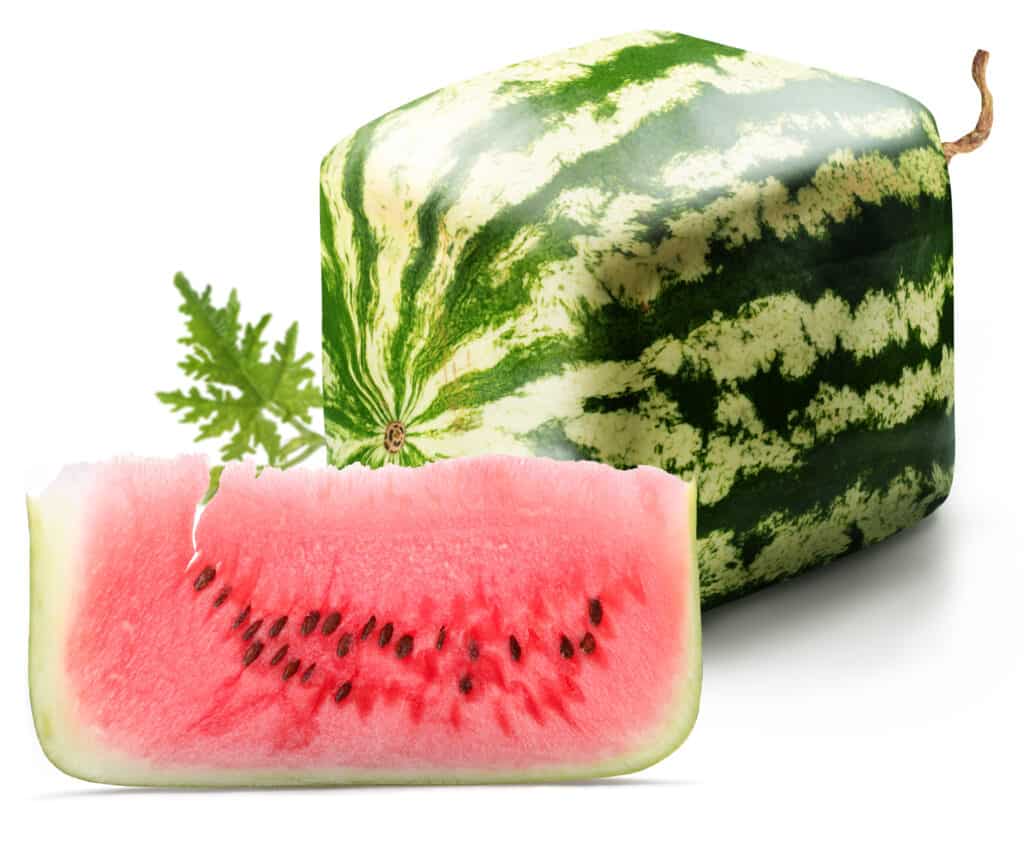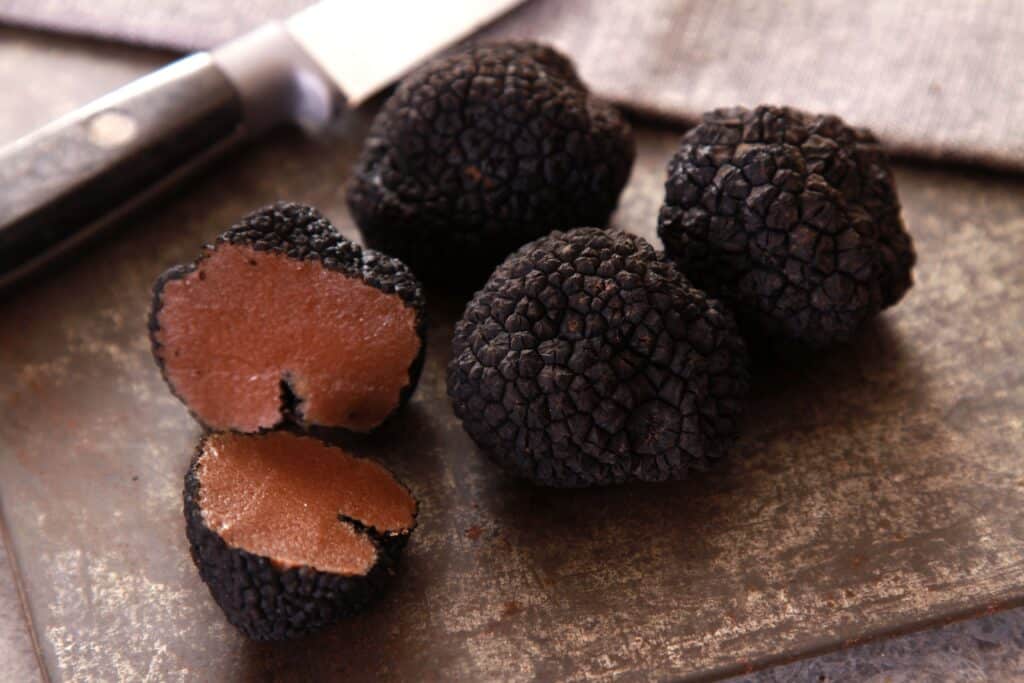Updated On: April 07, 2024 by dina
Fruits and vegetables are incredibly diverse. While most fruits and vegetables are readily accessible and affordable, a realm of exclusivity and luxury exists where certain varieties command astronomical prices. These fruits and vegetables tantalise the taste buds of the elite and ignite the curiosity of culinary enthusiasts.
Fruits and vegetables represent the epitome of rarity, flavour, and nutritional excellence, often sought after for their unique characteristics and unparalleled quality. This article will delve into the most expensive fruits and vegetables, discovering their origins and distinctive features and uncovering their health benefits. From the opulent Yubari King Melon to the elusive Matsutake Mushroom, we embark on a journey that showcases the extraordinary and indulgent side of nature’s bounty.
Why Some Fruits and Vegetables are Expensive?

Many factors may cause the higher cost of certain fruits and vegetables:
- Seasonality: Fruits and vegetables out of season may be more expensive due to importing or growing them in a greenhouse. When a particular fruit or vegetable is not in season locally, it must be transported from other regions or countries where it is available, leading to higher transportation costs.
- Limited availability: Some fruits and vegetables are grown in limited quantities or are only available in specific regions.
- Production and cultivation costs: Certain fruits and vegetables require specific growing conditions, such as specific soil types, temperature ranges, or irrigation methods. These factors can increase the cost of production, which may be reflected in the retail price.
- Perishability: Some fruits and vegetables have a shorter shelf life because of spoilage during transportation and storage. Additional care and resources are required to ensure quality and freshness, leading to higher costs.
- Organic or speciality varieties: Organic produce often requires more labour-intensive farming practices, and the certification process adds to the cost. Similarly, speciality or heirloom varieties may have limited availability and higher production costs, making them more expensive.
- Import and export taxes: Fruits and vegetables that are imported from other countries may get import taxes, customs duties, and transportation costs, which can significantly impact their price.
- Packaging and handling: Some fruits and vegetables require careful handling, sorting, and packaging; to maintain good quality. These additional steps in the supply chain can contribute to higher costs.
- Market demand and consumer preferences: If there is a high demand for certain fruits and vegetables, sellers may increase prices accordingly. Additionally, consumer preferences for specific varieties or exotic produce can increase costs.
Factors such as local availability, subsidies, and economies of scale can also influence the price of produce.
What Are the Most Expensive Fruits and Vegetables?

The prices of fruits and vegetables can vary depending on seasonality, location, and market conditions. However, here is a list of fruits and vegetables that are often considered relatively expensive:
- Yubari King Melon: This premium Japanese melon is known for its exceptional sweetness and can command high prices, often reaching hundreds or even thousands of dollars per melon.
- Densuke Watermelon: Grown only in Hokkaido, Japan, this rare black watermelon is highly prised and can be quite expensive.
- Ruby Roman Grapes: These grapes from Ishikawa, Japan, are known for their large size, deep red colour, and unique taste. They are often sold in bunches and can be quite costly.
- Pineapples from the Lost Gardens of Heligan: Pineapples are grown in the UK using traditional Victorian techniques, making them rare and expensive.
- Buddha-shaped Pears: Grown exclusively in China’s Hebei province, these pears are meticulously shaped to resemble miniature Buddha statues, making them highly sought after and expensive.
- Dekopon Citrus: Also known as Sumo Citrus, these large, seedless mandarins from Japan have a distinctive sweet taste and are typically sold at premium prices.
- Sembikiya Queen Strawberries: These strawberries from Japan are carefully cultivated and known for their large size, exceptional sweetness, and appealing appearance. They are often sold in exclusive gift sets.
- Square Watermelon: Grown mainly in Japan, square watermelons are shaped to fit better in refrigerators and are considered a novelty item, commanding higher prices than regular watermelons.
- Taiyo no Tamago Mangoes: These mangoes from Japan are considered luxury fruit, known for their high quality, exceptional taste, and beautiful packaging. They can be quite expensive.
- Roman Grapes: Grown in Italy, these rare grapes have a distinct blue colour and are known for their sweet and intense flavour. They often need more supply, making them expensive.
- Matsutake Mushrooms: These rare mushrooms, mainly found in Japan and other Asian countries, are highly prised for their unique aroma and flavour.
- Truffles: While technically not a vegetable, truffles are highly valued fungi known for their earthy and intense flavours and are considered one of the most expensive foods in the world.
- Fiddlehead Ferns: These edible ferns are considered a delicacy in many cuisines, but their availability is limited, leading to higher prices.
- Baby Vegetables: Small-sized and tender versions of vegetables like carrots, beets, and radishes are often considered gourmet items and can command higher prices.
- Purple Cauliflower: This vibrant-coloured cauliflower variety is gaining popularity for its unique appearance and nutritional benefits. It is often priced higher than regular cauliflower.
- Dragon Tongue Beans: These heirloom beans are known for their striking appearance, with purple streaks on yellow pods. Their limited availability can contribute to higher prices.
- Romanesco Broccoli: This unique vegetable has a mesmerising fractal pattern and is often more expensive than regular broccoli due to its rarity and aesthetic appeal.
- Microgreens: These tiny, young greens are packed with flavour and nutrients, making them popular in upscale restaurants. Their delicate nature and the short growing cycle can make them relatively expensive.
- Purple Peruvian Potatoes: These purple-skinned potatoes, native to the Andean region, have vibrant flesh and are often considered speciality varieties, commanding higher prices.
The prices of fruits and vegetables can vary based on location, seasonality, and market conditions, so these lists represent some of the generally more expensive options rather than an exhaustive ranking.
What Are the Health Benefits of Expensive Fruits and Vegetables?

Like their more affordable counterparts, expensive fruits and vegetables offer various health benefits. While the price does not necessarily determine the nutritional value, certain unique or speciality fruits and vegetables may have specific health benefits. Here are some examples:
- Berries: Berries are rich in antioxidants, vitamins, and fibre. They support brain health, promote heart health, aid in digestion, and may have anti-inflammatory properties.
- Citrus fruits: Citrus fruits contain vitamin C, which supports immune function, collagen production, and iron absorption. They also provide other vitamins, minerals, and antioxidants.
- Avocado: Avocados are a source of healthy fats that support heart health. They also provide fibre, vitamins, and minerals, which may help with weight management and nutrient absorption.
- Exotic fruits: Exotic fruits often contain unique blends of antioxidants and phytochemicals. They can provide vitamins, minerals, and fibre and offer various health benefits depending on nutrient profiles.
- Speciality mushrooms: Mushrooms offer specific health benefits, such as immune-boosting properties, stress reduction and immune support.
While expensive fruits and vegetables may offer unique characteristics or flavours, more affordable options can still provide similar health benefits. A diet that contains many types of fruits and vegetables, regardless of their cost, is critical to obtaining a range of nutrients and supporting overall health.
How Often Should A Man Consume Fruit and Vegetables?

A balanced diet must include various fruits and vegetables to guarantee nutrient intake. Of course, depending on age, level of exercise, and total calorie requirements, a guy should eat different amounts of fruits and vegetables. But a general recommendation from health experts is to strive towards the following:
Adults should consume from 1.5 to 2 cups of fruit, such as whole fruits, fresh fruit juices, or frozen fruits, should be consumed every day. 2 to 3 cups of vegetables daily, including a variety of vegetables, such as leafy greens, cruciferous vegetables, legumes, and other colourful vegetables. It’s also essential to prioritise consuming various fruits and vegetables to benefit from their unique nutrients and health-promoting properties.
In addition to quantity, focusing on the quality of the fruits and vegetables consumed is recommended. Opt for fresh, whole foods whenever possible, and aim for various colours to ensure a wide range of nutrients. Frozen or canned options without added sugars or sodium can be good choices if fresh produce is unavailable.
In a Nutshell!
The world of expensive fruits and vegetables presents us with a fascinating blend of luxury, rarity, and nutritional excellence. These unique and coveted varieties offer a glimpse into the extraordinary possibilities that nature can provide. While their high prices may limit their accessibility, they serve as a testament to the creativity, diversity, and craftsmanship within the food realm. Whether the Yubari King Melon’s exquisite sweetness, the Matsutake Mushroom’s earthy aroma, or the vibrant colours of Roman Grapes, these luxurious fruits and vegetables capture the imagination and elevate the dining experience. Various more affordable fruits and vegetables offer similar nutritional benefits and flavours.











